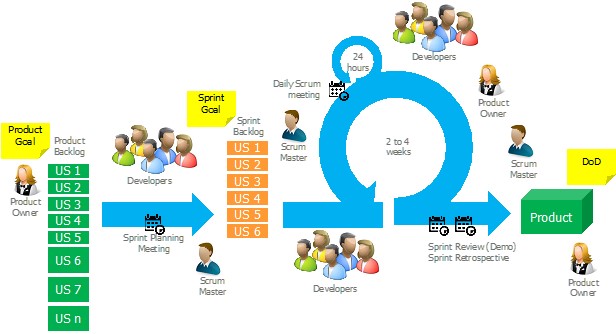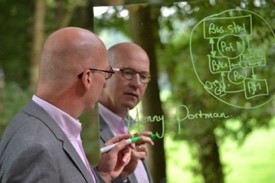Sensemaking in the Agile Forest
SERIES ARTICLE
By Henny Portman
The Netherlands
Introduction
Scrum[1], developed in 1995 by Ken Schwaber and Jeff Sutherland, is one of the most widely used agile frameworks worldwide for developing and maintaining products and services. This way of working helps you to respond flexibly to a dynamic environment and still unclear wishes and requirements about a product or service to be delivered. By keeping the focus on the greatest added value for the customer and receiving regular feedback on delivered partial results, the team steadily achieves the required results.

Easy to describe, challenging to apply
Scrum is based on empiricism and lean thinking. Empiricism states that knowledge comes mainly or entirely from experience. Decisions are made based on observations. Lean thinking is about reducing waste and therefore focuses on the essentials.
Scrum is easy to describe, but applying it is not. It requires a lot of discipline, experience, and coaching. Working according to Scrum is based on transparency, inspect what is made and adapt the deliverable as a result; this also provides opportunities to evaluate and continuously improve your own working method as a team.
- Transparency. The process and work must be visible to both those who perform the work and those who receive it. Transparency enables inspection.
- Inspection. The product and sprint backlog and the televised product must be assessed regularly. This also applies to the progress in relation to the agreed goals so that deviations can be identified early on. Inspection allows for adaptation.
- Adjustment. If the product to be delivered is not satisfactory, adjustments must be made. Adjustments must also be made if the process that is followed deviates too much from expectations. Think for example of the estimation of how much work a team can realize in a sprint. A team must have the space and authority and be given the time to adapt.
Scrum values
Successful use of Scrum and implementing changes requires all those involved to endorse and act upon the five Scrum values. The five Scrum values are:
More…
To read entire article, click here
Editor’s note: This is the second article in a series by Henny Portman, one of the world’s leading authorities on “agile”. Based in The Netherlands, Henny coined the term “agile forest” in 2019 to describe the many agile frameworks that have emerged over the last 20 years. This series is intended to help readers better understand the agile concept, navigate through the ‘underbrush’ and more successfully apply whichever framework is selected for their projects.
How to cite this article: Portman, H. (2022). What is Scrum? Sensemaking in the Agile Forest, series article 2, PM World Journal, Vol. XI, Issue II, February. Available online at https://pmworldlibrary.net/wp-content/uploads/2022/02/pmwj114-Feb2022-Portman-What-is-Scrum-sensemaking-in-the-agile-forest-series-article2.pdf
About the Author

Henny Portman
The Netherlands
![]()
Henny Portman, owner of Portman PM[O] Consultancy and was partner of HWP Consulting, has 40 years of experience in the project management domain. He was the project management office (PMO) thought leader within NN Group and responsible for the introduction and application of the PMO methodologies (portfolio, program, and project management) across Europe and Asia. He trains, coaches, and directs (senior) programme, project and portfolio managers and project sponsors at all levels, and has built several professional (PM(O)) communities.
Henny Portman is accredited in a variety of qualifications, including P3O, PRINCE2, MSP, MoP, PRINCE2 Agile, AgilePM, AgilePgM and AgileSHIFT trainer and an SPC4 SAFe consultant and trainer. He is a P3M3 trainer and assessor and PMO Value Ring Certified Consultant (PMO Global Alliance). On behalf of IPMA, he assesses mega and large projects for the IPMA Project Excellence Award. In addition to this, he is an international speaker, author of many articles and books in the PM(O) field, and an active blogger (hennyportman.wordpress.com).
Henny can be contacted at henny.portman@gmail.com
To view other works by Henny Portman, visit his author showcase in the PM World Library at https://pmworldlibrary.net/authors/henny-portman/
[1] The Scrum Guide: https://scrumguides.org/scrum-guide.html#scrum-theory










[…] Portman, H. (2022). What is Scrum? Sensemaking in the Agile Forest, series article 2, PM … […]